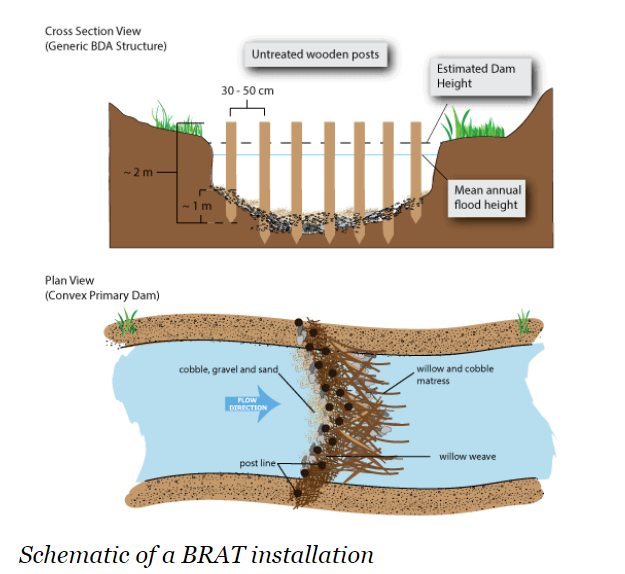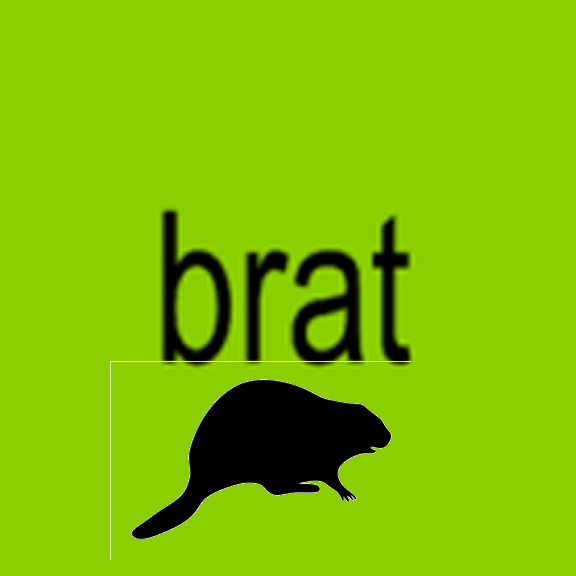The BRAT model of assessing creeks to see where beavers can fit and how much forage is available has been around for 20 years and was developed by Joe Wheaton at Utah State. As a tool that has been applied and reapplied and researched again and again on different landscapes it has a fairly robust application.
Beavers are all the rage at the moment, and “hypothetical beavers” are even MORE popular as you know. So they managed to snag a Sonoma headline and the attention of a recent graduate.
Beaver Dams for All
The beaver dam is back along Sonoma Creek in Maxwell Farms Regional Park, after winter storms washed away the previous dams, as usual.
We can find beaver dams here and there in the Sonoma Valley watershed, and the ecological benefits include slowing and storing water to help prevent erosion, and providing habitat for fish, frogs and multiple aquatic species.
But what about places where beaver dams could help restore and improve watersheds, and yet there are no beavers? That’s where the new Beaver Restoration Assessment Tool, or BRAT, comes in. It is an innovative planning tool designed to assess the potential for beaver dams as a stream conservation and restoration agent across watersheds. The idea is to install man-made beaver dams to replicate the ecological effects of natural beaver dams. Putting branches and limbs across a tributary, modeled on beaver dams, can provide spectacular benefits for people, fish, and fire breaks, according to Glen Ellen environmental consultant Karla Noyes.
So Karla wrote me a couple weeks ago looking to find landowners interested in her GIS skills for beavers and I introduced to a c0uple folks I thought might be interested. Of course I told her that beavers are the best at deciding where they should be and that they generally evaluate conditions without satellite technology.
They’re kind of old fashioned like that.
The fascinating PowerPoint presentation she gave me describes how the program works. “At the heart of BRAT,” it states, “is a capacity model that estimates the upper limit of dam density (dams per kilometer) for individual stream reaches throughout a drainage network. It predicts where beavers could build dams and to what extent. This focus on dam-building activity is crucial because it’s the ecosystem engineering role of beavers that we’re typically most interested in.”
Noyes got interested in the potential for using BRAT in Sonoma Valley while studying environmental science and GIS applications at Santa Rosa Junior College.
 She has mapped potential sites for beaver dams using the BRAT modeling in the Sonoma Valley Wildlife Corridor, and on many of the perennial and seasonal streams that empty into Sonoma Creek. The potential benefits of putting in the beaver dams before the beavers include:
She has mapped potential sites for beaver dams using the BRAT modeling in the Sonoma Valley Wildlife Corridor, and on many of the perennial and seasonal streams that empty into Sonoma Creek. The potential benefits of putting in the beaver dams before the beavers include:
Reintroduction and Conservation: By combining capacity and potential risk, researchers and resource managers can determine where and at what level reintroduction of beavers, or conservation efforts, are appropriate.
Risk Assessment: BRAT helps assess potential risks and constraints related to existing resources and proximity to infrastructure.
Honestly there is something so aspirational about this, as if you could staple beavers on the landscape and just keep them where you want them for a while. Or better yet do away with them altogether and just use beaver robots!
The use of the “analog” beaver dams has proven successful around the U.S. in helping restore creeks and wetlands and improving wildfire resiliency to landscapes. It has worked so well in many places that the U.S. Fish and Wildlife Service provides free technical and financial assistance to landowners, managers, tribes, corporations, schools and nonprofits interested in improving wildlife habitat on their land through the use of beaver dam “technology.”
Wheaton says that he tends to avoid the subject of beavers when using this kind of technology. He waits until people say “how do we make repairs” or “How do we make it look like that” or “what about maintenance?” before naming the unpopular solution.
Beavers may not use the BRAT model to decide where they belong, but take it from me, beavers are BRAT.







































